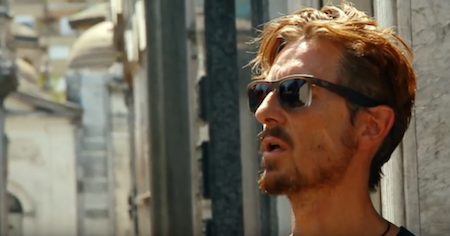
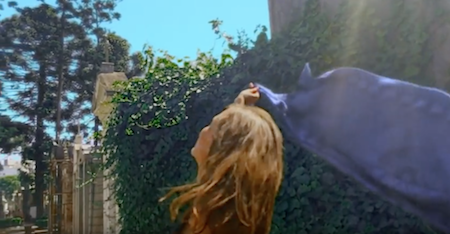

Blair Jollands recently filmed the music video for “I’ll Remember You” in Buenos Aires, using Recoleta Cemetery & the Jardín Japonés as shoot locations. Could this be the first time the cemetery has been used in a music video?
Leave a Comment


Blair Jollands recently filmed the music video for “I’ll Remember You” in Buenos Aires, using Recoleta Cemetery & the Jardín Japonés as shoot locations. Could this be the first time the cemetery has been used in a music video?
Leave a Comment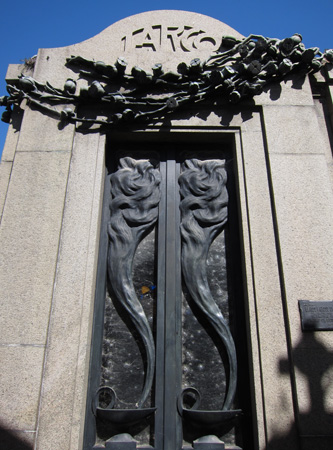
Born in 1897 in Buenos Aires, Jorge Larco left with his family at the age of six to live in Madrid where he began studying art. He was certainly influenced by works being produced by the Generación del 98 at the time & even studied under Julio Romero de Torres. After a visit to México to receive instruction from Roberto Montenegro, Larco returned to Buenos Aires in 1916. Two years later he began teaching at the Fine Arts school… where he remained until he was 54 years old.
His style of art tended toward elongated figures as seen from these examples from the 1930s: Boxeador, a self-portrait & a sketch of María Luisa:
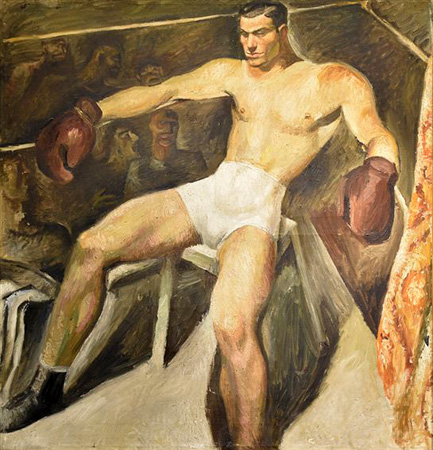

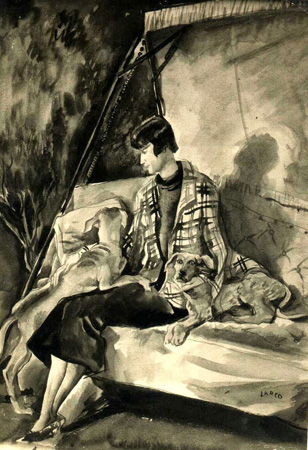
He maintained close connections with Spanish artistic circles, as evidenced by this photograph of Larco (far left) with poet/playwright Federico García Lorca (middle) taken in 1933 or 1934:
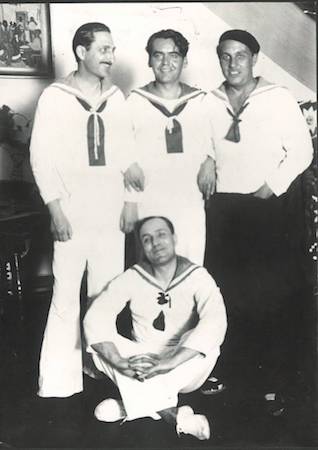
Larco passed away in 1967, but made sure his tomb stood out in Recoleta with twin burning funeral lamps & the entire structure wrapped with large metal poppies:
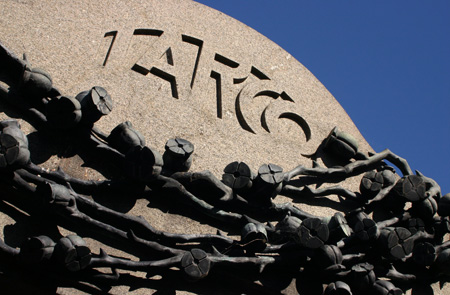
The inside contains even more fantastic —if hard to appreciate— art. Two stained glass panels are difficult to visualize from the outside, but if the glass door happens to be open, peek in. Apologies for the poor quality photographs, but it’s the best we could do. One panel appears to be Mary kneeling at the foot of Jesus after descending from the cross. Another panel appears to be a monk reading the bible… St. Jerome is often portrayed with a beard, a book & a skull (among other symbols), or could this be St. Augustine? Any ideas?
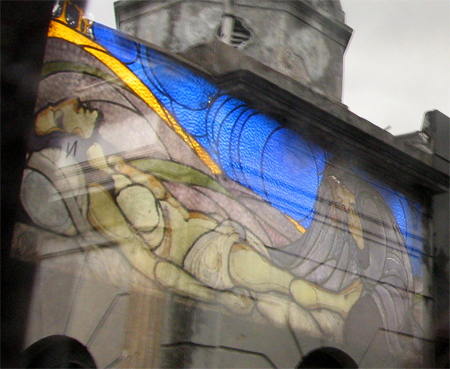
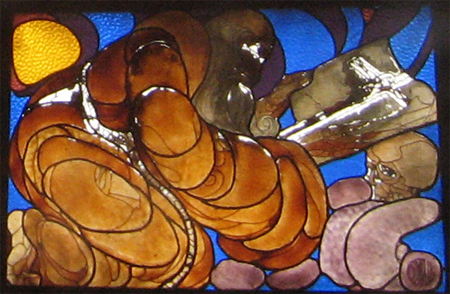
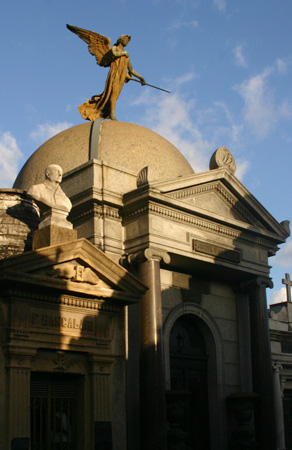
Built initially for his wife, Juan Gregorio Pujol found his way here too after passing away in 1861. Born in the province of Corrientes in 1817—just after Argentina earned its independence—much of Pujol’s life coincided with the new nation’s struggles.


Pujol graduated from the University of Córdoba with a law degree in 1838. After returning to Corrientes, Pujol obtained various government positions until named Governor in 1852. He worked with Justo José de Urquiza & Santiago Derqui to write a constitution that would be acceptable to Buenos Aires… always seen as problematic due to the region’s overwhelming economic power. Pujol did much to promote education & favor local trade in Corrientes, including aligning the province with Paraguay’s dictator, Francisco Solano López. Anything to avoid siding with Buenos Aires! In the end, Pujol had severe disagreements with Carlos Tejedor & Bartolomé Mitre & foresaw the coming civil war.
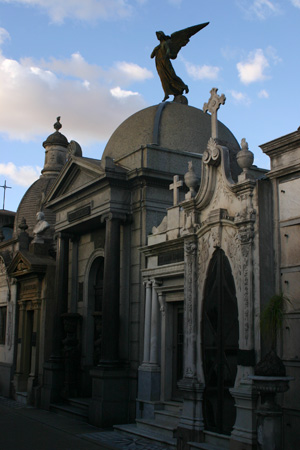
Pujol died in August 1861, still serving as Governor of Corrientes & one month before the Battle of Pavón ended the Confederación Argentina which he had supported & served his entire life. But Pujol’s most widely recognized contribution to Argentina was establishing mail service in Corrientes in 1856 along with the first postage stamp used in national territory:
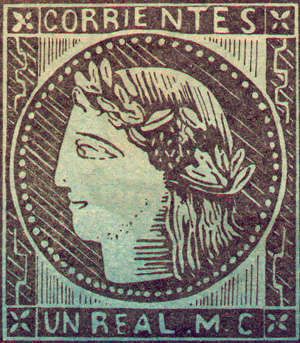
Juan Bautista Borra & Enrique Broszeit pioneered aerial photography in Argentina during the 1920s. Flying in propeller planes while taking risky positions for the best photos, they’ve left behind a valuable archive of Buenos Aires in its prime. More of their story can be found on the wonderful resource, Histarmar (in Spanish). Click on the above photo for a full-size version, found on the Histarmar website.
Leave a Comment
We love a good mystery…
Aquí descansaron los restos del Presidente de la República Dr. Arturo U. Illia desde su fallecimiento enero de 1983 a octubre de 1983
President of the Republic, Dr. Arturo U. Illia, laid to rest here from his passing in January 1983 until October 1983
President Illia had been forced from office by a military coup in 1966, another victim of the revolving door of democracy & dictatorship in the 20th century. The Argentina Independent has a good article describing Illia’s last day in office. As a high-ranking member of the Unión Cívica Radical, he was entitled to be buried in a mausoleum dedicated to those who had died in the 1890 revolution: a conflict that gave birth to that political party. Obviously he was moved there in October 1983, but why did Illia spend 10 months in this spot? A Presidential sash inside is another reminder of his temporary stay.
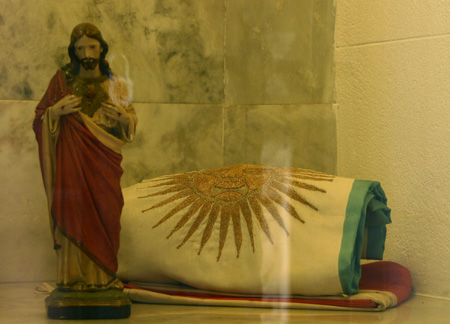
At first I thought this family might be related to Illia’s wife, Silvia Elvira Martorell Kaswalder. She had been undergoing treatment for cancer in a Texas hospital when Illia was forced from office in 1966. Silvia passed away only a few months later back home in Córdoba & was buried in Recoleta Cemetery in the tomb of Hipólito Yrigoyen’s mother. Several decades later, she moved to a separate vault. A search in Genealogía Familiar turned up nothing to relate either Illia or his wife to the Dechert-Barletti family.
According to a 1977 edition of the Boletín Oficial, Jorge Luis Dechert & Ernesto Alberto Barletti formed a company called Nininco that specialized in radio & television components as well as albums & cassette tapes. The business venture no longer exists, so even that extra info was a dead end.
If anyone has information as to why a former President temporarily rested in peace here, please help us solve this mystery!
Leave a Comment